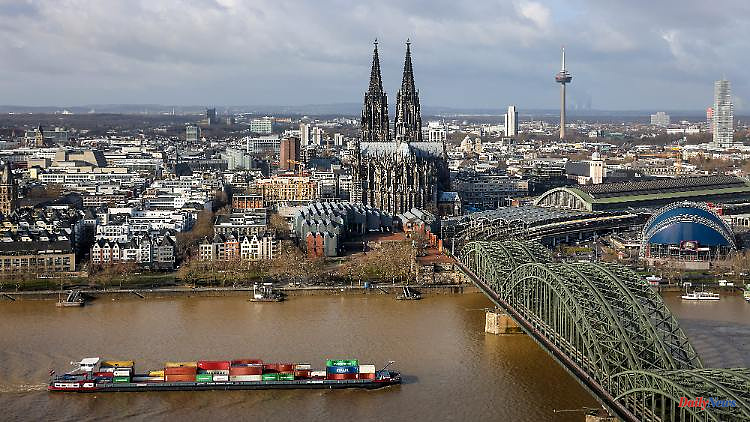Until 2019, Germany's major cities will record a regular increase in population. But since the corona pandemic, growth has come to an end. In the past year, the metropolises once again lost residents on average. Only a few cities are going against the trend.
The German cities also lost their population on average in the second Corona year 2021. Researchers at the Helmholtz Center for Environmental Research (UFZ) found this out after evaluating population registration data from the 15 largest German cities.
The team around the UFZ urban sociologist Prof. Dieter Rink had already looked at the development in the first year of the pandemic. Stagnation and shrinkage of the big cities have continued, they write in a new discussion paper. However, there are differences between the municipalities - some cities like Leipzig and Berlin also grew.
The researchers analyzed the population development in Berlin, Hamburg, Frankfurt, Cologne, Munich, Leipzig, Dresden, Hanover, Düsseldorf, Essen, Bremen, Stuttgart, Nuremberg, Dortmund and Duisburg. As in 2020, the population change was down 0.18 percent. By 2019, on the other hand, almost all of the cities had grown, albeit with less momentum.
There are clear differences between the major cities. Five major cities were able to grow in 2021 - above all Leipzig, followed by Berlin, Hanover, Hamburg and Munich. In contrast, the population losses in Bremen tripled year-on-year, and Cologne also lost more than twice as many inhabitants in 2021 as in 2020. "Overall, the picture is very mixed," the researchers write. Immigration is an important factor in the development of large cities. In 2020 there had been a sharp slump, in 2021 the situation was more positive again. An increase of 7.1 percent in the number of people moving in was offset by an increase in the number of people leaving by 6.7 percent.
The ratio of births to deaths was more favorable in 2021 than in 2020: the number of births rose by 2.4 percent across all major cities, and the number of deaths by an average of 3.1 percent. In 2020, births had fallen by 2.5 percent and deaths had risen by almost 5 percent. It is currently difficult to determine the proportion that the pandemic has in urban development - but Corona is a trend amplifier, said Prof. Rink.
"We are currently experiencing a high level of refugee immigration from Ukraine as a result of the war. We expect further immigration to the big cities in the near future, but it will be at a lower level than before the pandemic and will be selective". At the same time, tight housing markets and high rents in most major cities hampered growth.
(This article was first published on Wednesday, July 20, 2022.)












